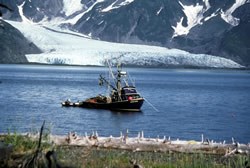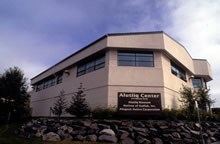 The Council has made a concerted effort to involve local communities affected by the oil spill in the restoration program. Projects funded include habitat enhancements of interest to sport and commercial fishermen, restoration of subsistence resources, food safety testing, and public outreach and participation.
The Council has made a concerted effort to involve local communities affected by the oil spill in the restoration program. Projects funded include habitat enhancements of interest to sport and commercial fishermen, restoration of subsistence resources, food safety testing, and public outreach and participation.
Here are some highlights that have resulted from the Trustee Council's effort to incorporate meaningful public participation and community involvement into the restoration program:
 Construction of the Alutiiq Archaeological Repository in Kodiak was funded to protect archaeological resources and educate the public about Alutiiq culture. In addition, funding was provided to train volunteers to monitor and act as site stewards of archaeological sites on the Kenai Peninsula, Kachemak Bay, Uganik Bay, Uyak Bay, and the Chignik area of the Alaska Peninsula.
Construction of the Alutiiq Archaeological Repository in Kodiak was funded to protect archaeological resources and educate the public about Alutiiq culture. In addition, funding was provided to train volunteers to monitor and act as site stewards of archaeological sites on the Kenai Peninsula, Kachemak Bay, Uganik Bay, Uyak Bay, and the Chignik area of the Alaska Peninsula.